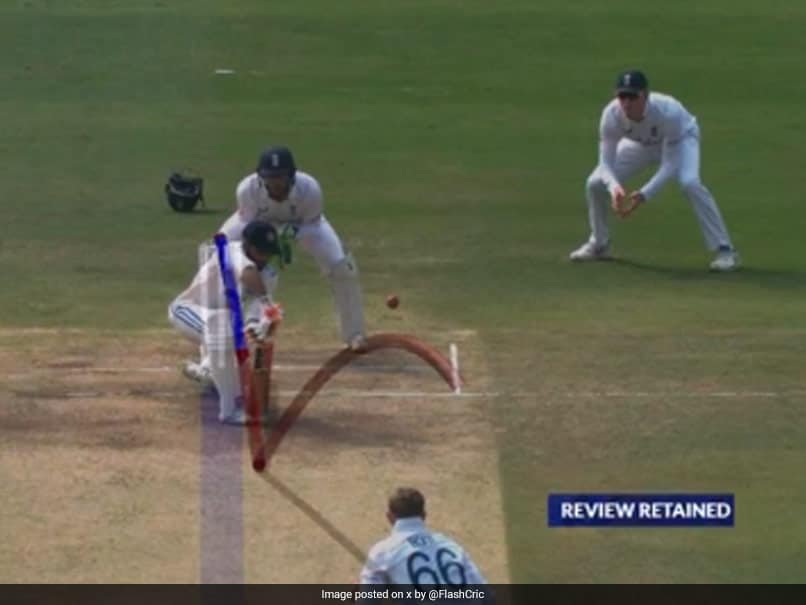Root’s controversial LBW dismissal was upheld by DRS due to impact within the line of stumps, leading to the out decision. The recent dismissal of Joe Root due to LBW resulted in widespread debate and discussion among cricket fans.
The controversial decision was ultimately given out by the Decision Review System (DRS) as the impact of the ball was deemed to be within the line of the stumps. This incident has reignited the conversation around the accuracy and effectiveness of technology in modern-day cricket.
With emotions running high and opinions divided, let’s delve deeper into the intricacies of why DRS was used and how it led to Root’s dismissal, unraveling the complexities of technology in the sport.
Understanding The Lbw Dismissal
The LBW (Leg Before Wicket) dismissal is one of the most complex and often debated decisions in cricket. Root’s ‘controversial’ LBW dismissal has sparked intense discussions among fans and experts alike. Understanding the LBW dismissal and the DRS (Decision Review System) protocol is crucial to comprehending why the decision was overturned, despite initial on-field adjudication. Let’s delve into the intricacies of the LBW rule and why the DRS ultimately deemed Root out.
What Is Lbw?
The LBW (Leg Before Wicket) rule comes into play when the batsman obstructs the ball with any part of their body, preventing it from hitting the stumps. If the umpire deems that the ball would have hit the stumps if the obstruction had not occurred, the batsman can be given out LBW.
When Can Lbw Be Given?
LBW can be given when the ball, in the umpire’s judgement:
- Strikes the batsman’s pad
- The point of impact is in line with the stumps or outside off stump
- The ball does not make contact with the bat

Credit: www.skysports.com
The Controversy Surrounding Root’s Lbw Dismissal
Joe Root’s LBW dismissal in the recent match has sparked intense debate and divided opinions among players and fans. Let’s delve into the heart of the issue and understand why the Decision Review System (DRS) upheld the on-field umpire’s call.
Description Of Root’s Dismissal
Root was given out LBW after the on-field umpire adjudged him to be plumb in front of the stumps. The ball from the bowler seemed to be angling in sharply and struck Root low on the pads, leading to a fervent appeal from the fielding team.
Initial Reactions From Players And Fans
- Players from both teams expressed contrasting views on the decision, with some believing it was the right call while others felt Root was unlucky to be given out.
- Fans took to social media to voice their opinions, with heated discussions ranging from the accuracy of the DRS system to the impact of such decisions on the outcome of the match.
In the heat of the moment, controversies like these often stir up emotions and create memorable moments in the game of cricket.
Examining The Decision Review System (drs)
When it comes to understanding the Decision Review System (DRS) in cricket, it plays a crucial role in reviewing challenging decisions, especially in LBW (Leg Before Wicket) dismissals. Let’s delve into how the DRS works and the significance of technology in LBW decisions.
How Does The Drs Work?
The DRS allows teams to challenge the on-field umpire’s decision through a technology-based review system. Using various technologies like ball tracking and ultra-edge, it aims to provide accurate outcomes to contentious decisions.
Role Of Technology In Lbw Decisions
- Ball tracking: Shows the trajectory of the ball to determine if it would have hit the stumps, crucial in LBW decisions.
- Ultra-edge: Detects any contact between the bat and ball, aiding in confirming edges before the ball hits the pad.

Credit: sports.ndtv.com
Why Did The Drs Give Root Out?
Why did the DRS give Root out?
England’s captain Joe Root found himself at the center of a controversial lbw dismissal during the first test match against India. As confusion and debates surrounded the decision, the Decision Review System (DRS) came into play, ultimately resulting in Root’s dismissal. Understanding the reasons behind the DRS verdict sheds light on the technology’s role in cricket and the accuracy of its decisions.
Explanation Of The Technology’s Verdict
The DRS uses advanced ball tracking and impact prediction technology to assist umpires in making accurate decisions. When Root was given out, the DRS took into account various factors such as the ball’s trajectory, impact with the pads, and the projected path had the pads not been in the way. The system conclusively determined that the ball would have gone on to hit the stumps, leading to the decision to give Root out.
Discussion On The Accuracy Of The Drs
The accuracy of the DRS has been a subject of debate within the cricketing community. While the technology has significantly improved decision-making, there are still instances where human judgment is necessary to supplement its findings. The Root dismissal serves as a reminder that while the DRS is a valuable tool, it is not infallible and should be used in conjunction with on-field umpires’ expertise.
Credit: www.msn.com
Frequently Asked Questions Of Root’s ‘controversial’ Lbw Dismissal Explained: Why Drs Gave It Out
What Was The Controversial Lbw Dismissal During Root’s Match?
The controversial LBW dismissal during Root’s match was when the on-field umpire gave him out, but it was referred to the Decision Review System (DRS) for further analysis.
Why Did The Drs Give The Lbw Decision In Favor Of Root?
The DRS gave the LBW decision in favor of Root based on the evidence provided by ball tracking technology, which showed that the ball would have gone on to hit the stumps.
Was The Controversial Lbw Dismissal Justified?
Opinions on the justification of the controversial LBW dismissal vary. While the DRS supported the decision, some argue that there was insufficient evidence to overturn the umpire’s original decision. The controversy lies in the interpretation of the ball’s trajectory.
Conclusion
The root of Root’s dismissal can be traced back to the intricate workings of the DRS system. Understanding the rationale behind the decision sheds light on the nuances of cricket regulations. As the dust settles on this controversial call, it’s evident that the DRS played a definitive role in the outcome.
Cricket aficionados are left to ponder the impact of technology on the game.
